Making the most of outdoor space despite the weather
Older people sitting around all day with little to occupy their minds is an image of life in residential care that the sector is keen to dispel.
Empowering adults to achieve an active and interesting lifestyle in spite of care needs is now regarded as integral to a quality care environment, with access to secure and versatile outdoor space a major plus point when selling care home life.
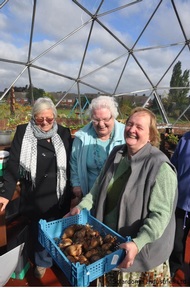
Scenic garden areas are a bonus for any activities co-ordinator seeking to encourage residents in embracing a wide range of interests, but with many parts of the country facing constant downpour and flood alerts at the moment the possibilities of a daily itinerary are limited until drier and sunnier conditions arrive.
Lifestyle is not the only victim of extreme rainfall, however, which can also impact on general health. Lack of exposure to sunlight can have significant effects of the well-being of older people, especially those diagnosed with dementia. As the ‘American Journal of Alzheimer’s Disease and Other Dementias’ puts it: “Patients with Alzheimer’s disease in particular have a high prevalence of vitamin D deficiency, which is also associated with low mood and impaired cognitive performance in older people.”
Not all care providers are content with allowing the weather to hold them back, however, seeking to incorporate alternatives into their design that allow for more activities to take place and for residents to gain valuable Vitamin D even when the rainclouds refuse to dissipate.
Greenhouse effect
Many care homes offer scenic gardens, countryside locations and proximity to wooded areas as part of the facilities provided, but some have gone one step further to incorporate a greenhouse or a summerhouse.
As Janet Cresswell, care home manager at The Old Vicarage, attests, the inclusion of a summerhouse, kindly donated by Four Housing, allows outdoor areas to be enjoyed even when lawns are likely to remain soggy for many weeks.
Ms Cresswell comments: “The summer house is a great addition to the garden. We have recently added new fencing to make the garden a safer area for residents and the summer house is the finishing touch which I’m sure many of our residents will enjoy.”
Resident Charles Tully spoke of his delight at the addition, which was installed in September, saying: “The summer house looks like it has been in our garden for a long time as it fits in so well with the house and grounds.
“It is a nice change to be able to sit outside in pleasant surroundings and have the shelter of the summer house.”
Bernie Hogg, operations manager at Four Housing, comments: “We wanted to make sure that older people in Wooler would continue to benefit from the summer house and it is great to see that it is being put to good use.”
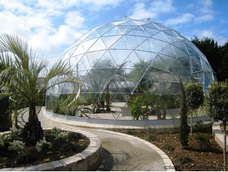
Landscape awareness
Such solutions are not unachievable even in the most extreme conditions, such as in the wind-battered Outer Hebrides where residents of the Western Isles Hospital benefit from an innovative Solardome greenhouse design.
Going one step further than a traditional greenhouse, the Western Isles Council chose the Solardome design for the panoramic views it offered combined with its hardiness against the elements.
Landscape architect for the council, Mr Robert Stubbington, comments: “We chose the Solardome glasshouse because of its ability to be a unique focal point and because it is well known in the Western Islands for its strength and longevity in the most extreme weather conditions.
“We intend to fill the dome with interesting plants and pipe in familiar sounds, such as grass being mown and skylark and corncrake calling. This will help to remind patients of the crofter lifestyle and stimulate happy memories of being close to nature.
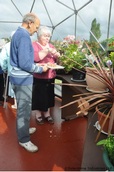
“Our vision was to create a peaceful, tranquil environment for patients who are used to a natural way of life and who benefit from having access to natural light. There has been a great deal of praise for the project from carers, patients and their families.”
Pippa Bailey, managing director of , adds: “We are dedicated to enhancing the healthcare environment by providing an innovative approach to therapeutic and rehabilitation design. Our domes enable patients and residents to take advantage of the proven benefits of being outside and create a tranquil environment that in turn stimulates a feeling of well-being. They are the perfect multi-purpose resource and offer a unique way for healthcare providers to enhance their facilities.”
Overseas developments
Across the ocean, the US care sector is seeing a similar drive towards environments that allow residents to make the most of their outdoor space, rather than being shut away from it.
The ‘Green House Project’ was envisioned in 2005 and has since been launched in all 50 states.
According to physician and geriatrician Dr Bill Thomas, the Project focuses on creating “small, intentional communities for groups of elders and staff to focus on living full and vibrant lives. Each Green House residence is designed to be a home for six to 10 elders, blending architecturally with neighbouring homes.
“The Green House homes are characterised by their vibrant outdoor spaces and pleasing aesthetics both inside and out. Each elder has a private room or unit with a private bathroom. The elders’ rooms allow ample sunlight and are clustered around a shared living room with a hearth, an open kitchen and dining area. The homes are relatively small, allowing many elders to get around without wheelchairs. Safety features are carefully built into each home.”
Since both the US and the UK are faced with the challenge of developing care and living solutions that can cope with the growth of ageing populations, it would seem imperative to embed more architectural flexibility and landscape awareness into future visions of care home housing.
Latest Features News
 25-Nov-19
2019 Election: Boris Johnson leaves social care in 'too difficult box' but Labour vows to end 'crisis'
25-Nov-19
2019 Election: Boris Johnson leaves social care in 'too difficult box' but Labour vows to end 'crisis'
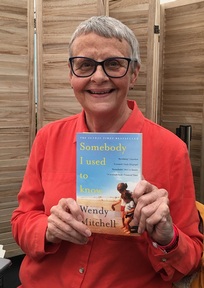 18-Oct-19
Podcast: Wendy Mitchell and dementia: 'My biggest fear is not knowing who my daughters are'
18-Oct-19
Podcast: Wendy Mitchell and dementia: 'My biggest fear is not knowing who my daughters are'
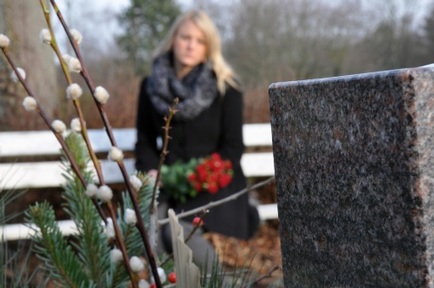 27-Sep-19
Exclusive: Care minister backs care workers' call for time off to grieve and attend funerals
27-Sep-19
Exclusive: Care minister backs care workers' call for time off to grieve and attend funerals
 19-Sep-19
Podcast: Gyles Brandreth says poetry helps ward off dementia
19-Sep-19
Podcast: Gyles Brandreth says poetry helps ward off dementia
 30-Aug-19
Edinburgh Fringe funnyman joins comics facing toughest audience at care home gig
30-Aug-19
Edinburgh Fringe funnyman joins comics facing toughest audience at care home gig